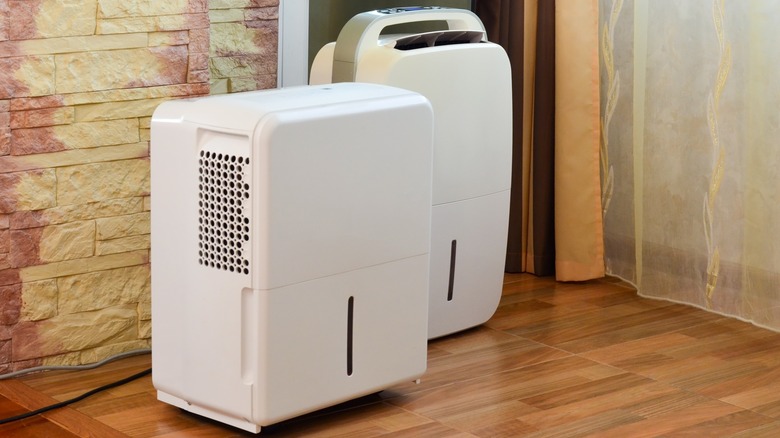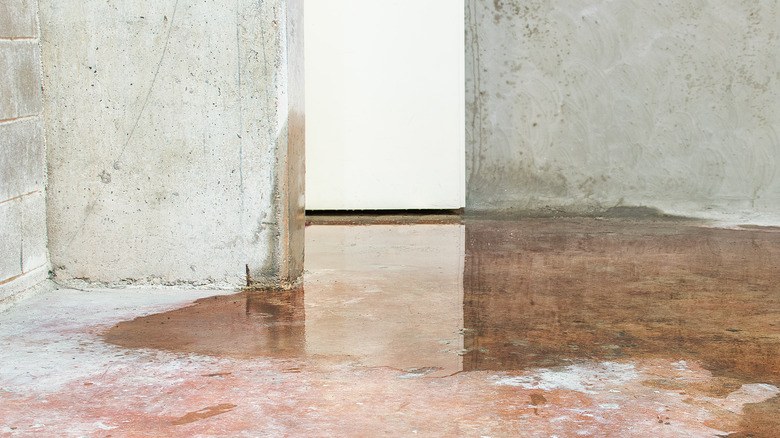How To Choose The Right Size Dehumidifier For Your Space
We may receive a commission on purchases made from links.
Does your home often feel too humid and uncomfortable, or is your basement damp and with a musty smell? It could be that there's too much moisture trapped in the air, a common problem in warmer months. A dehumidifier helps by pulling out that water, reducing the humidity levels in the space, according to Christian Heating & Air Conditioning. There are numerous benefits to using these electric devices, including lowering the risk of mold and mildew growth and improving the function of the home's heating and cooling system, potentially lowering your energy bills as a result.
The good news is that portable dehumidifiers can easily fix the problem in some environments, and they don't require any significant hardwiring into your HVAC. However, to work efficiently and capture as much moisture as possible from the space, you need to buy the right version. When it comes to selecting these devices, size plays a big role in the overall functionality and success you'll have.
Consider the room's moisture level first
The amount of water in the air or room is a core component of the selection of a dehumidifier's size, as a space that seems to always be damp needs a more powerful system to extract that moisture. Areas without visible moisture problems may not need as much function. The Home Depot states that an area that has a musty smell or is sometimes humid is considered "damp" and could benefit from the use of a dehumidifier.
If you see condensation in the space, such as it looks like the wall is sweating or a puddle on the floor that's not from a leak, that's a much higher risk. This should be considered a "wet" area that requires a device capable of pulling out much more. It may be more severe if there's always standing water in the room, requiring the most powerful of systems to reduce humidity levels.
Take into consideration the size
Keeping in mind the moisture level, shopping for a dehumidifier that's right for the size of the room is the next step. The size of humidifiers is often expressed in the number of pints of moisture they can remove in 24 hours. Sylvane has some recommendations here. For example, a space that's damp and about 300 square feet needs a smaller, 20-pint dehumidifier, which is typically the lowest level, but if that same space is considered wet, a 25 to 30-pint device is going to work better. The larger and wetter the space, the more power and performance the device needs. In a slightly damp area of 1,200 square feet, the system needs to be at least 50 pints to pull out enough moisture. If it's considered a wet space, you'll need a 60-pint system.
In situations where there is moisture throughout the home, and it is a constant concern, a whole-home system may be ideal (or you can choose one designed just for one area, like the basement). The selection still needs to focus on the conditions and size of the space. It may also be helpful to consider updating your home's air conditioner if it isn't pulling out enough moisture during the summer months.


